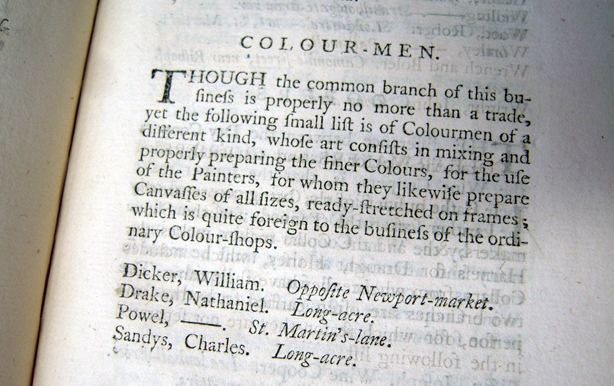While researching a collection guide on art history in the IHR library, we have been interested to see the range of material available in a library which doesn’t in itself specialize in the subject. The importance of art and culture within society means that our collection contains lots about the social, economic, political and ecclesiastical background of artists, patrons and consumers of art. Our collections complement the more specialist resources at the Warburg and Courtauld Institutes, Senate House Library, the National Art Library and elsewhere, and are especially strong in primary sources giving context to the history of western art since the fall of Rome.
Material can be found in a variety of sources, including letters and diaries, travel narratives, and the administrative records of households, local and national government and businesses. Among our online resources, newspapers carry contemporary reviews of exhibitions such as the Nazi ‘Exhibition of Degenerate Art’ held in Berlin in 1938. This can be found alongside a piece about the unveiling of three decorative panels designed and executed by students of the Hornsey School of Art for Muswell Hill Branch Library (The Times, 25 Feb 1938, p.18). Material in the North American collections includes exhibition records for the American Academy of Fine Arts and American Art-Union and The National Academy of Design, and an annual review of art in the Dominion Annual Register.

Mortimer, The Universal Director 1763
Parliamentary records also have a lot to offer, as varied as the petition associated with William Hogarth that led to ‘Hogarth’s Act’ introducing copyright protection, patents on art materials, and official reports on the provision of national galleries of art. From a parliamentary paper we learn of campaigns to provide artificial light in the newly opened South Kensington galleries, enabling them to open later “so that the members of the industrial classes may have opportunity of visiting them in the evening, which is their only time for such recreation and instruction.” (Letters and Memorials on Admission of Public in Evening to Turner and Vernon Galleries of Pictures, House of Commons Papers, 1859, accessed via Proquest UK Parliamentary Papers)
 Our rich biographical collections help with identifying patrons and better understanding their backgrounds and motivations. There are a number of specialist dictionaries of artists, useful for seeing the backgrounds of people practicing in different fields.
Our rich biographical collections help with identifying patrons and better understanding their backgrounds and motivations. There are a number of specialist dictionaries of artists, useful for seeing the backgrounds of people practicing in different fields.
The guide draws out several themes. There are collections on war and political art, with compilations of posters, accounts of war artists and records for political patronage of art. There is material on iconoclasm across the collections, especially in the sections for Byzantine, Ecclesiastical, Latin American and Northern European history, including the writings of reformers, legislation and town and church records. The history of collecting and display is also a strong theme, as discussed in more detail in the Guide to Museum and Heritage studies. Alongside some subject specific works such as catalogues of collections, guides to using art as a source and secondary texts, a wealth of material can be found in sources that aren’t in themselves about art, and the guide highlights some examples.
